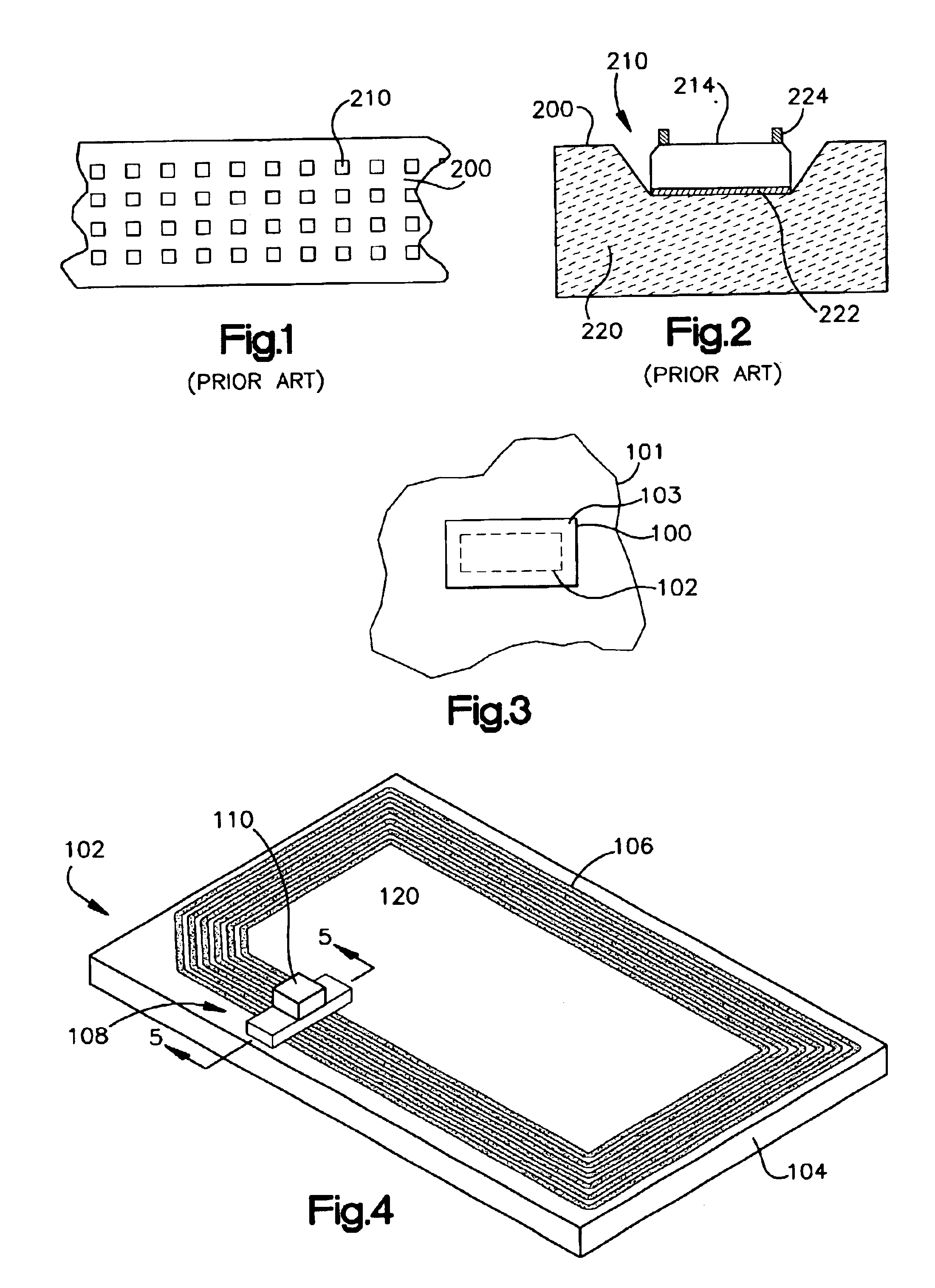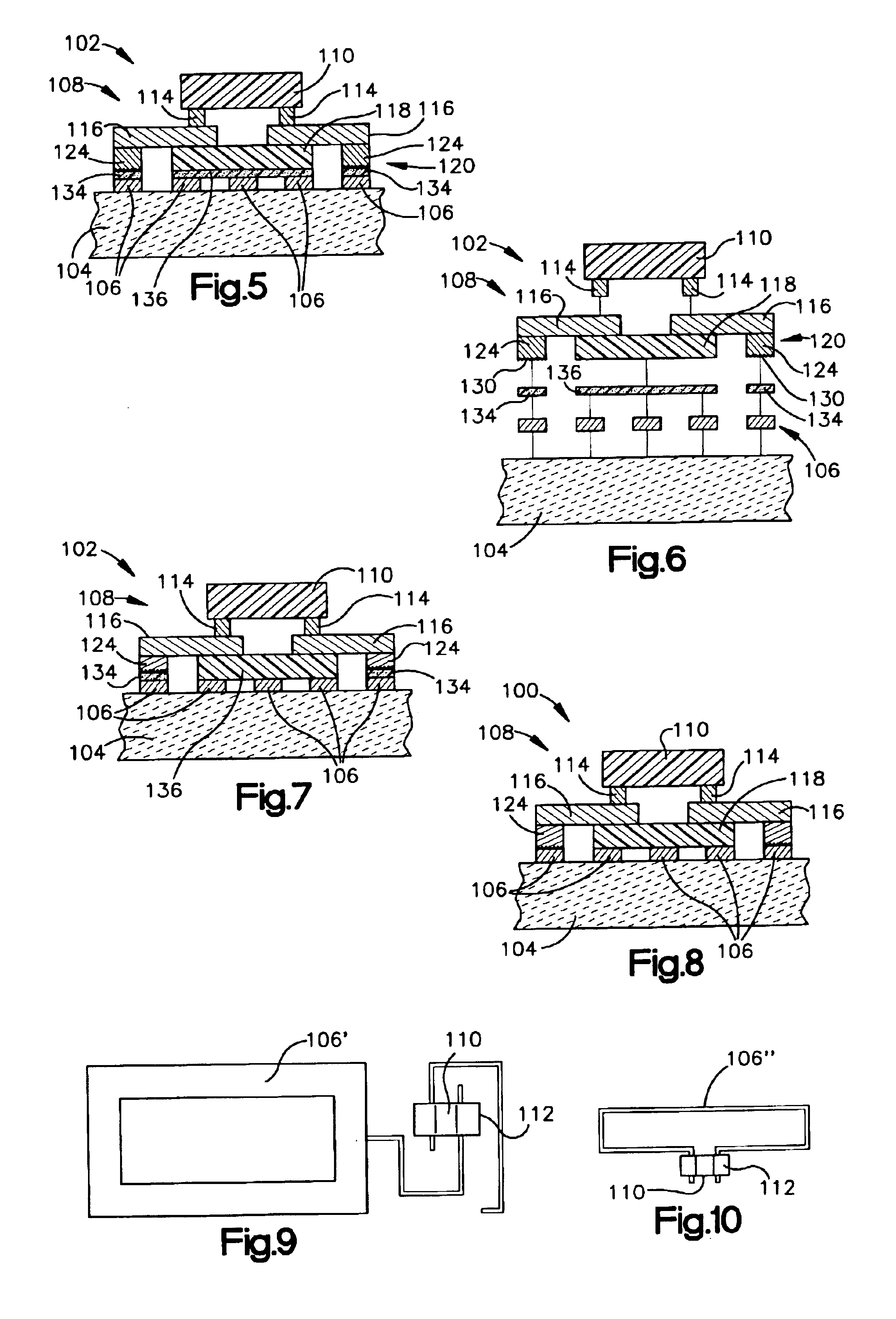RFID device and method of forming
a technology of rfid devices and antennas, applied in the direction of shielding material radiating elements, device details, instruments, etc., can solve the problems of slow and/or difficult methods of attaching electronics to the antenna, and difficulties in assembly
- Summary
- Abstract
- Description
- Claims
- Application Information
AI Technical Summary
Benefits of technology
Problems solved by technology
Method used
Image
Examples
Embodiment Construction
RFID Inlays
[0043]By way of overview, the present invention involves structures and method for operatively coupling parts of an RIFD inlay together. Specifically, the invention relates to conductive connections between an RFID antenna and a strap that is in turn operatively coupled to a chip, such as an integrated circuit chip. The conductive connection may include conductive bumps attached to the strap, and / or may include conductive traces, such as a conductive ink traces. The conductive connections provide a convenient, fast, and effective way to operatively couple antennas and straps.
[0044]Referring initially to FIG. 3, an RFID tag or label 100 is adhered or otherwise coupled to an object 101. The RFID tag or label 100 includes an RFID inlay 102 and a printable facestock 103. The RIFD inlay 102 as used herein may include a variety of active and passive RFID devices.
[0045]Referring now and in addition to FIGS. 4-6, further details of the RFID inlay 102 are shown. The RFID inlay 102...
PUM
 Login to View More
Login to View More Abstract
Description
Claims
Application Information
 Login to View More
Login to View More - R&D
- Intellectual Property
- Life Sciences
- Materials
- Tech Scout
- Unparalleled Data Quality
- Higher Quality Content
- 60% Fewer Hallucinations
Browse by: Latest US Patents, China's latest patents, Technical Efficacy Thesaurus, Application Domain, Technology Topic, Popular Technical Reports.
© 2025 PatSnap. All rights reserved.Legal|Privacy policy|Modern Slavery Act Transparency Statement|Sitemap|About US| Contact US: help@patsnap.com



